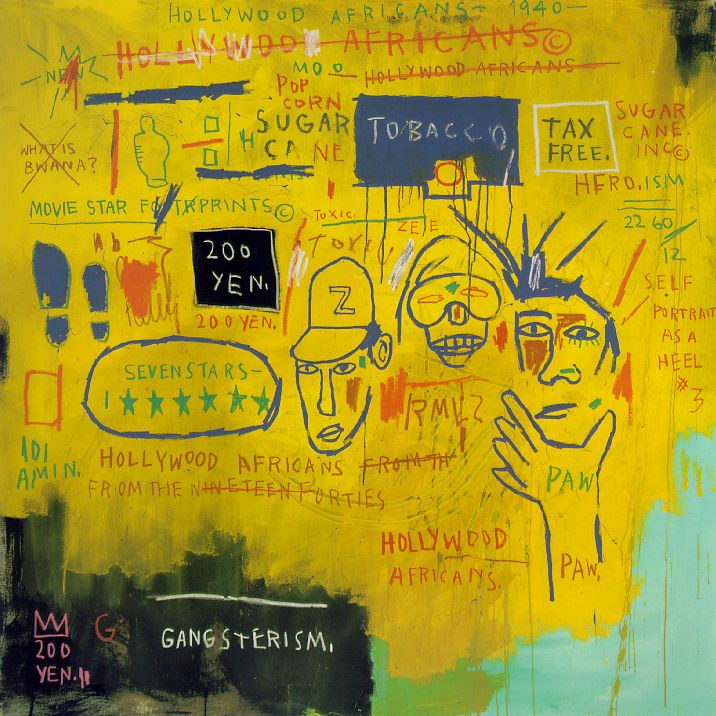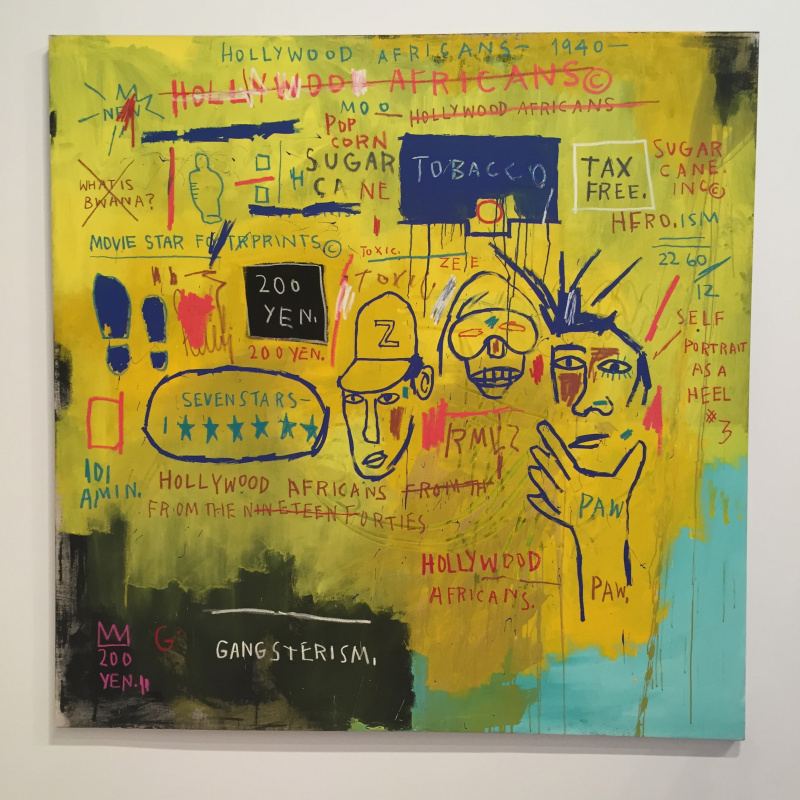log in
Enter site
Login to use Arthive functionality to the maximum
Hollywood Africans
Jean-Michel Basquiat • Painting, 1983, 213.4×213.4 cm
Description of the artwork «Hollywood Africans»
In 1983, Basquiat was already a famous painter not only in new York. His works participate in exhibitions, and he travels a lot: sometimes accompanying Andy Warhol(for example, trips to Europe), sometimes relaxing with friends. This year he went to Los Angeles to present his paintings at the exhibition in the gallery Larry Gagosian. Company on this trip he made a rap musician Rammellzee and graffiti artist Toxic. During this journey Basquiat created a series of pictorial and textual works, one of which was painting "Hollywood Africans".
In the painting the artist has depicted their Trinity, as if standing at gunpoint cameras. Basquiat often used pure colours, squeezing the paint from the tubes onto the canvas, and use palette. In this work he chose for the background of one of his favorite flowers, which became a symbol of the sun in the Hollywood hills, with their luxurious lifestyle. Against this background, the heroes of the paintings look slightly puzzled and dissatisfied. I must say that in America the 80s prejudice against blacks was very strong. Basquiat, even as a famous artist, came face to face with racism and aggression. And the painting "Hollywood Africans" has become a kind of mockery of the white elite from the "savage" who has achieved success. In the words surrounding the heroes of the canvas, Basquiat gathered all the stereotypes regarding black Hollywood actors in the 80-ies. For example, "sugarcane", "tobacco", "gangsterito" and "What is Bwana?" (most likely a reference to the film "Call me Bwana" in 1963).
In this work, as in many others, Basquiat cancels some written lines. By his own admission, he did it to draw attention to them: "I cross out words so you could have seen them better. The fact that they are deleted, makes you want to read them".
Author: Eugene Sidelnikov
In the painting the artist has depicted their Trinity, as if standing at gunpoint cameras. Basquiat often used pure colours, squeezing the paint from the tubes onto the canvas, and use palette. In this work he chose for the background of one of his favorite flowers, which became a symbol of the sun in the Hollywood hills, with their luxurious lifestyle. Against this background, the heroes of the paintings look slightly puzzled and dissatisfied. I must say that in America the 80s prejudice against blacks was very strong. Basquiat, even as a famous artist, came face to face with racism and aggression. And the painting "Hollywood Africans" has become a kind of mockery of the white elite from the "savage" who has achieved success. In the words surrounding the heroes of the canvas, Basquiat gathered all the stereotypes regarding black Hollywood actors in the 80-ies. For example, "sugarcane", "tobacco", "gangsterito" and "What is Bwana?" (most likely a reference to the film "Call me Bwana" in 1963).
In this work, as in many others, Basquiat cancels some written lines. By his own admission, he did it to draw attention to them: "I cross out words so you could have seen them better. The fact that they are deleted, makes you want to read them".
Author: Eugene Sidelnikov



